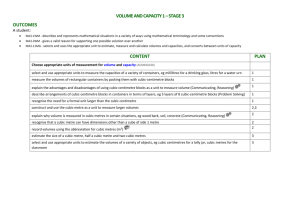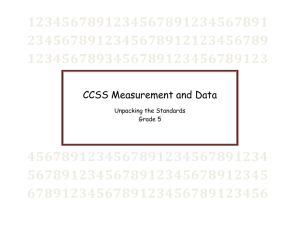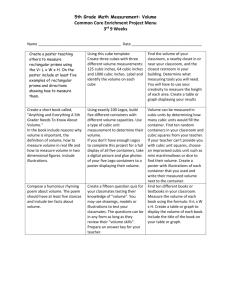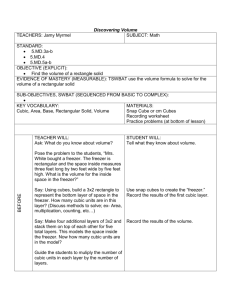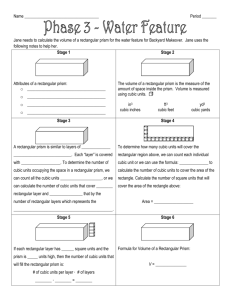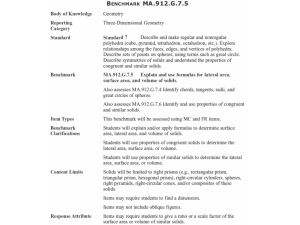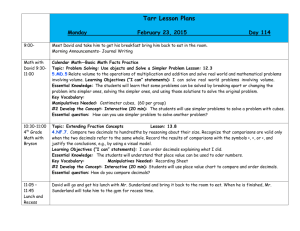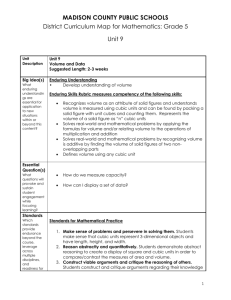I can convert among different-sized standard measurement units
advertisement
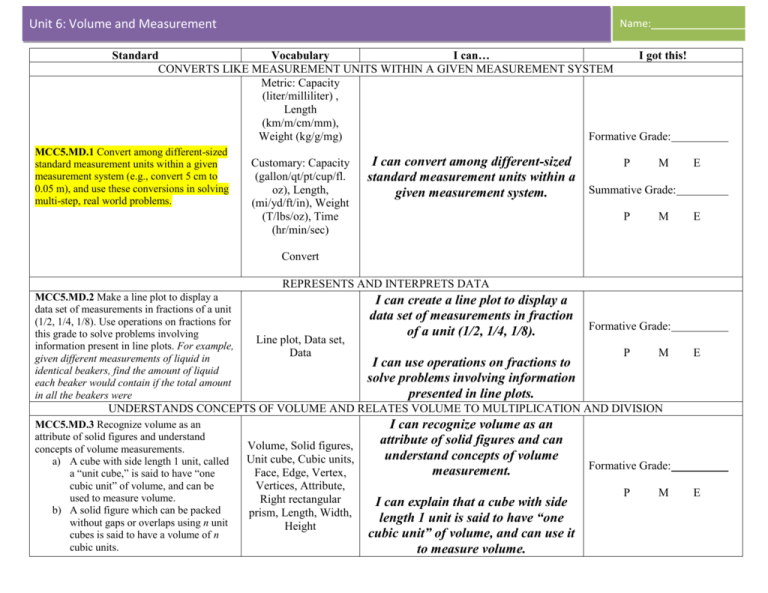
Unit 6: Volume and Measurement Name: Standard Vocabulary I can… I got this! CONVERTS LIKE MEASUREMENT UNITS WITHIN A GIVEN MEASUREMENT SYSTEM Metric: Capacity (liter/milliliter) , Length (km/m/cm/mm), Weight (kg/g/mg) Formative Grade: MCC5.MD.1 Convert among different-sized standard measurement units within a given measurement system (e.g., convert 5 cm to 0.05 m), and use these conversions in solving multi-step, real world problems. Customary: Capacity (gallon/qt/pt/cup/fl. oz), Length, (mi/yd/ft/in), Weight (T/lbs/oz), Time (hr/min/sec) I can convert among different-sized P M standard measurement units within a Summative Grade: given measurement system. P M E E Convert REPRESENTS AND INTERPRETS DATA MCC5.MD.2 Make a line plot to display a data set of measurements in fractions of a unit (1/2, 1/4, 1/8). Use operations on fractions for this grade to solve problems involving information present in line plots. For example, given different measurements of liquid in identical beakers, find the amount of liquid each beaker would contain if the total amount in all the beakers were Line plot, Data set, Data I can create a line plot to display a data set of measurements in fraction of a unit (1/2, 1/4, 1/8). I can use operations on fractions to solve problems involving information presented in line plots. Formative Grade: P M E UNDERSTANDS CONCEPTS OF VOLUME AND RELATES VOLUME TO MULTIPLICATION AND DIVISION MCC5.MD.3 Recognize volume as an attribute of solid figures and understand concepts of volume measurements. a) A cube with side length 1 unit, called a “unit cube,” is said to have “one cubic unit” of volume, and can be used to measure volume. b) A solid figure which can be packed without gaps or overlaps using n unit cubes is said to have a volume of n cubic units. Volume, Solid figures, Unit cube, Cubic units, Face, Edge, Vertex, Vertices, Attribute, Right rectangular prism, Length, Width, Height I can recognize volume as an attribute of solid figures and can understand concepts of volume measurement. I can explain that a cube with side length 1 unit is said to have “one cubic unit” of volume, and can use it to measure volume. Formative Grade: P M E I can explain that a solid figure packed without gaps using n unit cubes is said to have a volume of n cubic units. MCC5.MD.4 Measure volumes by counting unit cubes, using cubic cm, cubic in, cubic ft, and improvised units. MCC5.MD.5 Relate volume to the operations of multiplication and addition and solve real world and mathematical problems involving volume. a) Find the volume of a right rectangular prism with whole-number side lengths by packing it with unit cubes, and show that the volume is the same as would be found by multiplying the edge lengths, equivalently by multiplying the height by the are aof the base. Represent threefold whole-number products as volume, e.g., to represent the associative property of multiplication. b) Apply the formulas V = l x w x h and V = b x h for rectangular prisms to find volumes of right rectangular prisms with whole-number edge lengths in the context of solving real world and mathematical problems. c) Recognize volume as additive. Find volumes of solid figures composed of two non-overlapping right rectangular prisms by adding the volumes of the non-overlapping parts, applying this technique to solve real world problems. I can measure volumes by counting unit cubes. Unit cube, Cubic units I can use cubic cm, cubic in, cubic ft, and improvised units. Formative Grade: P M E I can relate volume to real world problems with no computational errors. Space, 3D, Overlap, Formula, Area of base, Gap I can compute and represent the volume of a rectangular prism using the associative property of multiplication. Formative Grade: P M E Summative Grade: I can use formulas to compute the volume of a rectangular prism with no computational errors. I can compute the volume of two nonoverlapping rectangular prisms with no computational errors. P M E

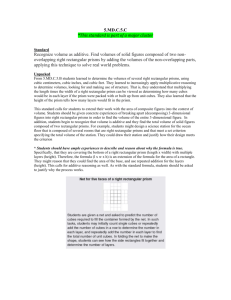
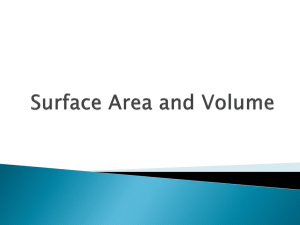
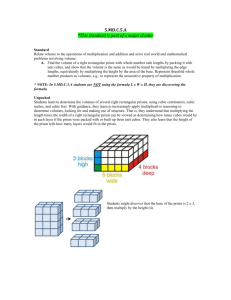
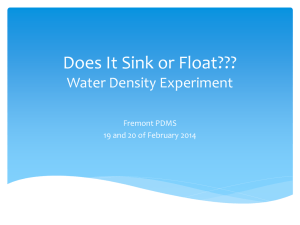
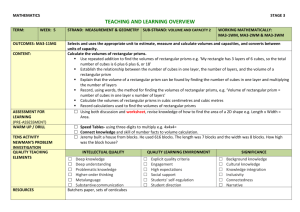
![Volume of Prisms and Cylinders [12/4/2013]](http://s2.studylib.net/store/data/005712570_1-e7691fc1893418ebe51c7a30e9e35d27-300x300.png)
